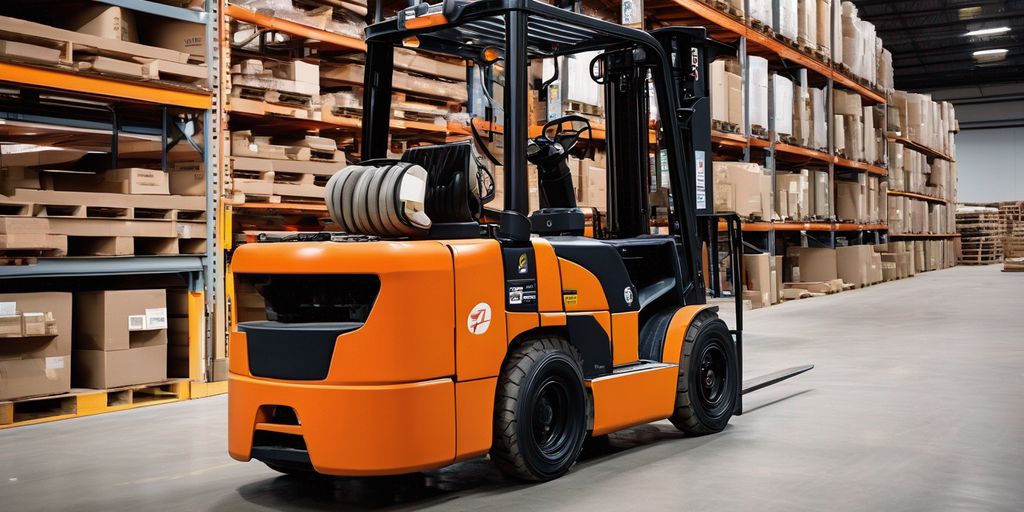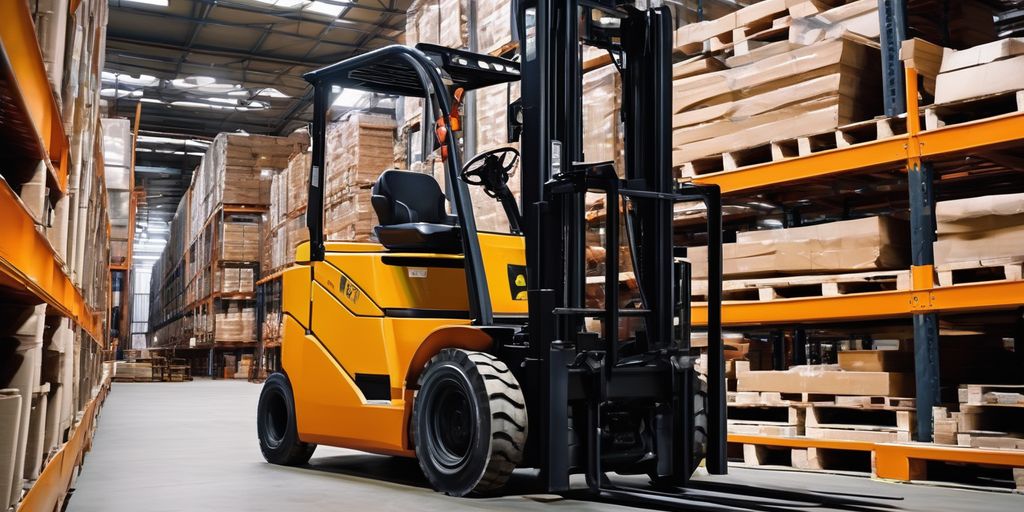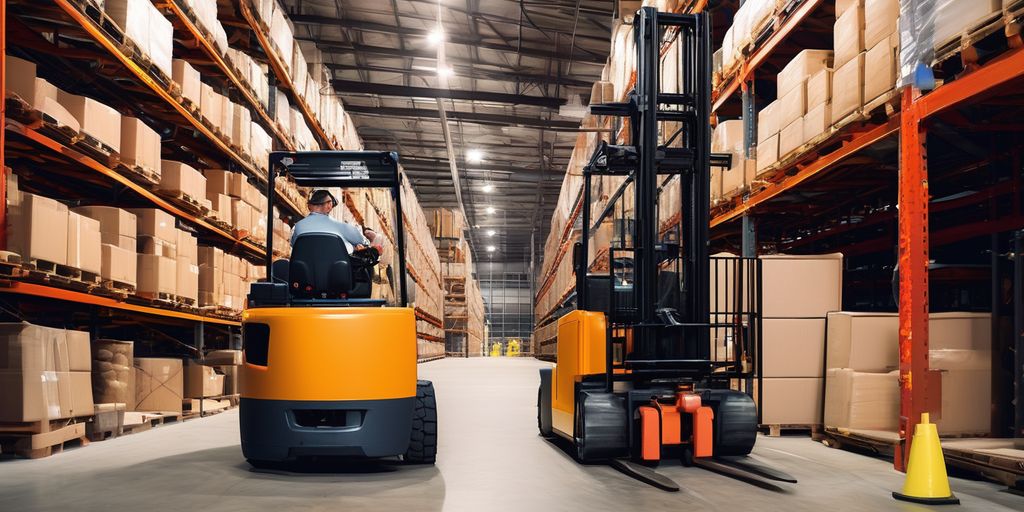How to Successfully Sell Your Forklift: A Comprehensive Guide — overview
Selling a forklift, especially a used one, can be a daunting task. However, with the right approach and knowledge, you can ensure a successful and profitable sale. This comprehensive guide is designed to help you navigate the process, from understanding the market to handling post-sale considerations. Whether you're a seasoned seller or new to the world of forklifts, this guide will provide you with valuable insights and practical tips to make your selling journey smooth and efficient.
Key Takeaways
- Understand current market trends and seasonal demands to set a competitive price for your forklift.
- Thoroughly inspect, repair, and clean your forklift to enhance its appeal and value.
- Craft a compelling listing and leverage online marketplaces and social media for effective marketing.
- Be prepared to negotiate with potential buyers by understanding their concerns and highlighting key features of your forklift.
- Ensure a smooth transaction process by preparing necessary documentation, securing payment methods, and arranging for pickup or delivery.
Understanding the Market for Used Forklifts
Purchasing used forklifts is a strategic move that can significantly benefit your business’s efficiency and bottom line. By carefully assessing your needs, setting a budget, sourcing from reputable used equipment dealers, conducting thorough inspections, and considering factors like environment and certification, you can confidently navigate the used forklift market.
Preparing Your Forklift for Sale
Selling a forklift requires careful preparation to ensure you get the best possible price and attract serious buyers. Here are some essential steps to prepare your forklift for sale.
Conducting a Thorough Inspection
A comprehensive inspection is crucial. Examine the forklift’s condition, including the engine, hydraulics, tires, brakes, and mast. Request maintenance records to gauge how well the forklift has been cared for in the past. Inspect the forks and attachments for wear and damage, as these components are critical for the safe handling of loads.
Necessary Repairs and Maintenance
Address any necessary repairs and maintenance before listing your forklift for sale. This includes fixing any mechanical issues, replacing worn-out parts, and ensuring the forklift meets safety and performance standards. Check for certification labels indicating compliance with regulations like OSHA guidelines.
Cleaning and Presentation Tips
First impressions matter. Clean your forklift thoroughly, removing any dirt, grease, and grime. Pay attention to both the exterior and interior, including the operator's cabin. A well-presented forklift not only looks more appealing but also suggests that it has been well-maintained. Consider applying a fresh coat of paint if needed to enhance its visual appeal.
By considering the factors above, you not only ensure you get value for money but also a reliable workhorse that serves your business for years.
Setting the Right Price for Your Forklift
Evaluating Market Value
Before setting a price, it's crucial to evaluate the market value of your forklift. Utilize online resources and industry publications to gather accurate pricing information. This will help you understand the fair market value for the specific used forklift model and its condition. With this knowledge, you can negotiate a fair price that fits your budget.
Considering Depreciation
Depreciation is a significant factor when pricing your forklift. Forklifts, like other machinery, lose value over time. Consider the age, usage, and overall condition of your forklift. A well-maintained forklift will depreciate slower than one that has been neglected.
Offering Competitive Pricing
To attract potential buyers, your pricing needs to be competitive. Research similar models and their prices in the market. Set a realistic budget that accounts not only for the purchase price but also for potential maintenance and repair costs. While used forklifts come at a lower initial price, factoring in ongoing expenses ensures a well-rounded view of the investment.
Setting the right price is not just about covering your costs but also about making the offer attractive to buyers. A well-priced forklift will sell faster and more efficiently.
Effective Marketing Strategies
Crafting a Compelling Listing
Creating a compelling listing is crucial for attracting potential buyers. Highlight the key features of your forklift, such as its condition, age, and any recent maintenance or repairs. Use clear and high-quality language to describe the forklift's capabilities and benefits. Including detailed specifications and high-resolution images can significantly enhance your listing's appeal.
Utilizing Online Marketplaces
Online marketplaces are a powerful tool for reaching a broad audience. Platforms like eBay, Craigslist, and specialized equipment sales websites can help you connect with buyers looking for used forklifts. Ensure your listing is optimized with relevant keywords to improve visibility. Regularly update your listing to keep it fresh and engaging.
Leveraging Social Media
Social media platforms offer unique opportunities to market your forklift. Share your listing on platforms like Facebook, LinkedIn, and Instagram to reach a wider audience. Utilize targeted ads to reach specific demographics interested in material handling equipment. Engaging with potential buyers through comments and messages can also build trust and facilitate sales.
Consistent and strategic marketing efforts can significantly increase your chances of selling your forklift quickly and at a competitive price.
Negotiating with Potential Buyers
Understanding Buyer Concerns
When negotiating with potential buyers, it's crucial to understand their primary concerns. Buyers often worry about the condition of the forklift, its maintenance history, and any potential hidden issues. Address these concerns upfront to build trust and facilitate a smoother negotiation process.
Highlighting Key Features
Emphasize the key features and benefits of your forklift. Highlight aspects such as low operating hours, recent maintenance, and any upgraded components. Providing detailed information can help justify your asking price and make your forklift more appealing to buyers.
Closing the Deal Successfully
To close the deal successfully, be prepared to negotiate on price and terms. Flexibility can often lead to a quicker sale. Consider offering incentives such as free delivery or a short-term warranty to sweeten the deal. Securing a mutually beneficial agreement is the goal, ensuring both parties feel satisfied with the transaction.
Remember, the negotiation process is not just about price but also about addressing buyer concerns and highlighting the value of your forklift.
Handling the Transaction Process

Preparing Documentation
Proper documentation is crucial for a smooth transaction. Ensure you have all necessary paperwork, including the bill of sale, maintenance records, and any warranty information. This not only builds trust with the buyer but also protects you legally.
Secure Payment Methods
When it comes to payment, security is paramount. Opt for secure payment methods such as bank transfers or escrow services. Avoid accepting personal checks or cash to minimize the risk of fraud.
Arranging for Pickup or Delivery
Coordinate with the buyer to arrange for the pickup or delivery of the forklift. Make sure to discuss and agree on the logistics beforehand to avoid any misunderstandings. If you're offering delivery, ensure the forklift is safely loaded and transported.
A well-organized transaction process not only ensures a smooth sale but also enhances your reputation as a reliable seller.
Post-Sale Considerations
Providing After-Sale Support
Providing excellent after-sale support is crucial for maintaining a good relationship with your buyer. This can include answering any questions they may have about the forklift's operation, offering guidance on maintenance, and being available for any troubleshooting needs.
Handling Returns or Complaints
Handling returns or complaints efficiently can significantly impact your reputation as a seller. Make sure to have a clear return policy in place and be prepared to address any issues that arise promptly. This not only helps in resolving conflicts but also builds trust with your buyers.
Gathering Customer Feedback
Gathering customer feedback is essential for improving your future sales processes. Consider asking your buyers questions such as:
- How long have you been a customer of ours?
- Did you get the right forklift for your application as the result of our consultation?
- Were there any problems with the initial purchase?
- Has the seller been responsive to your inquiries post-purchase?
- Has the seller done a good job with maintenance and repairs? What do you think of their service plan?
- Would you buy from this seller again?
- What could the seller improve about their operation?
Consider the resale value of the forklift when gathering feedback, as it can provide insights into the long-term satisfaction of your customers.
Conclusion
Selling a forklift successfully requires a strategic approach, thorough preparation, and a keen understanding of the market. By following the steps outlined in this guide, you can ensure that you present your forklift in the best possible light, attract serious buyers, and secure a fair price. Remember, the key to a successful sale lies in transparency, detailed documentation, and effective marketing. Whether you're upgrading your equipment or simply looking to liquidate assets, this comprehensive guide equips you with the knowledge and tools needed to navigate the selling process with confidence. Happy selling!
Frequently Asked Questions
How do I determine the right price for my used forklift?
Evaluating the market value, considering depreciation, and offering competitive pricing are essential steps in setting the right price for your used forklift.
What are some popular forklift brands and models to consider?
Popular brands include Toyota, Hyster, and Caterpillar. Models vary based on specific needs and applications, so it's important to research which models suit your requirements best.
How can I effectively market my used forklift?
Crafting a compelling listing, utilizing online marketplaces, and leveraging social media are effective strategies for marketing your used forklift.
What should I include in the documentation when selling a forklift?
Ensure you have all necessary documentation such as the bill of sale, maintenance records, and any warranty information to provide to the buyer.
How can I handle returns or complaints after the sale?
Providing after-sale support, having a clear return policy, and addressing any complaints promptly can help in managing returns or complaints post-sale.
What are secure payment methods for selling a forklift?
Secure payment methods include bank transfers, escrow services, and certified checks to ensure safe and reliable transactions.




Leave a comment
This site is protected by hCaptcha and the hCaptcha Privacy Policy and Terms of Service apply.